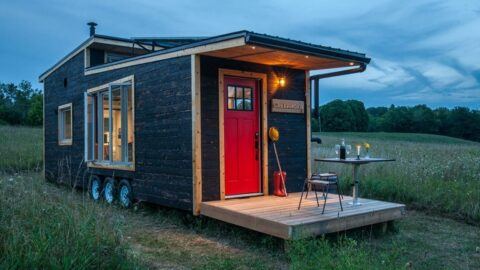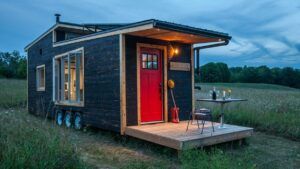What It Takes for Tiny House Off Grid Living
Living in an off-grid tiny house offers the ultimate freedom to live anywhere without the constraints of traditional power and water systems. This lifestyle requires a commitment to minimalist living and a reduced environmental footprint. I have personally navigated the transition to off-grid living, and I’m here to share the insights and realities of this rewarding journey.
What Qualifies as an Off-Grid Tiny Home?
An off-grid tiny home is self-sufficient, with no reliance on public utilities. It’s designed to reduce environmental impact and living expenses, often situated in remote areas using alternative energy sources like solar, wind, or hydropower. These homes are small in size, which inherently reduces energy needs.
Benefits of Living Off-Grid
A Sustainable Lifestyle
Living off-grid significantly reduces reliance on traditional power sources and minimizes environmental impact. By using renewable energy and managing resources wisely, you contribute to a more sustainable future.
Financial Savings
One of the most appealing aspects of off-grid living is the potential for significant financial savings. Although there’s an initial investment in off-grid systems, you’ll see long-term savings through the reduction or elimination of utility bills and avoidance of rising energy costs.
Self-Reliance and Autonomy
Off-grid living offers a profound sense of independence. You can live in diverse locations without the limitations of city water or grid power. With complete control over your power, water, and waste systems, you are truly self-reliant.
Considerations Before Living in an Off-Grid Tiny Home
Powering a Tiny House
When considering how to power your tiny home, alternative energy sources like micro hydropower and solar power are excellent choices. I recommend exploring EcoFlow Power Kits, such as the Get Set starter kit, the Prepared kit, or the Independence Kit. Pair these kits with EcoFlow Solar Panels for a comprehensive renewable energy system. Use the EcoFlow Power Kit Calculator to estimate your power needs accurately.
Water Supply and Waste Management
A steady water supply is crucial for off-grid living. Options include rainwater collection systems and wells, paired with proper filtration systems for drinking water and greywater. Composting toilets are an effective solution for waste management, converting waste into usable compost.
Finding the Right Location
Choosing the right location for your off-grid tiny home is vital. Consider the climate, access to resources, and local zoning laws. Ensure the area receives sufficient sunlight for solar panels and avoid regions prone to high erosion.
Food Options
Growing your own food is a sustainable way to support your off-grid lifestyle. Whether through a garden or a greenhouse, using compost from composting toilets or food scraps can enrich your soil and help maintain a healthy food supply.
Designing Your Off-Grid Tiny Home
Solar Orientation and Energy Efficiency
Design your home to maximize solar exposure by positioning it north-facing with minimal shading. This ensures optimal energy efficiency.
Quality Insulation and Ventilation
Good insulation helps retain heat during winter and keeps your home cool in summer. Efficient ventilation is crucial for maintaining air quality and controlling moisture.
Materials and Construction
Use sustainable, eco-friendly materials for construction. Ensure a strong foundation to avoid issues in areas with high erosion. Working with specialists in off-grid living can provide valuable expertise.
Essential Tips for Living in an Off-Grid Tiny Home
- Maximize space and minimize clutter.
- Prioritize storage and organization.
- Be prepared for low energy days with a backup power plan.
Frequently Asked Questions
Can You Live Off the Grid in a Tiny House?
Yes, it is not only feasible but often easier than in a larger home, provided you have proper planning and resources.
How Much Does It Cost to Build a Tiny House off the Grid?
Costs vary widely, ranging from $10,000 to $150,000 depending on location, size, design, and the level of self-sufficiency you aim for.
Final Thoughts
Off-grid tiny houses offer a simpler, more sustainable way of life. With careful planning and the right resources, such as EcoFlow’s Power Kits, you can create an efficient and sustainable living environment. Embrace the freedom and self-reliance of off-grid living and enjoy the journey to a more sustainable future.


